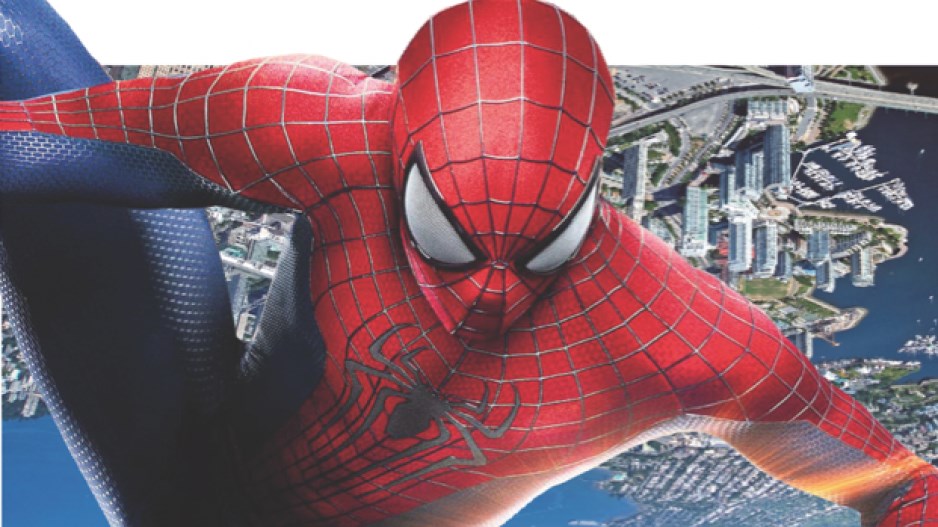Glance at the movie releases this spring and summer and you might wonder how many of the big titles had some or all of their visual effects (VFX) done in Vancouver.
A better question might be: How many blockbusters did not come to Vancouver for their VFX? Slated for release May 2, the big-budget sequel The Amazing Spider-Man 2 used the Vancouver branch studio of Moving Picture Company (MPC) and the Vancouver studio of Sony Pictures Imageworks for many of its effects. Godzilla, which was shot in Vancouver and will be released May 16, also went through MPC Vancouver, as did the Angelina Jolie fantasy-drama Maleficent (May 30). X-Men: Days of Future Past (May 23), the latest offering in a franchise that has a long history with the city, uses some visual effects done by Vancouver's Digital Domain. And that's just May.
Other coming titles with a Vancouver VFX imprint include Transformers: Age of Extinction (Industrial Light & Magic, (ILM), June 27), Guardians of the Galaxy (MPC, August 1), Teenage Mutant Ninja Turtles (Image Engine Design and ILM, August 8), Star Wars: Episode VII (ILM, early 2015), Tomorrowland (ILM, 2015) and Jurassic World (ILM, 2015). ILM also did effects for current release Captain America: The Winter Soldier.
Some companies – MPC, ILM, Sony Pictures Imageworks – are international corporations that have opened Vancouver studios to take advantage of the city's vast talent pool, and to use British Columbia's tax credits.Image Engine Design, however, is a homegrown entity that has been in the business for the past two decades and has been part of the industry's evolution.
Image Engine began in 1995 primarily to work on television series, and employed 20 people at the time. Since expanding into the feature film market in 2005, the company has grown steadily and now employs 225 to 250 people, depending on the number of projects it has.
Besides Teenage Mutant Ninja Turtles, current projects include the thriller Child 44, which stars Gary Oldman, and Chappie, the most recent project of director Neill Blomkamp, who used Image Engine for his 2009 feature District 9.
While Vancouver's live-action film industry waned in the past half-decade, its visual effects industry has been booming.
The two industries are not, according to Image Engine visual effects executive producer Shawn Walsh, exclusive of one another.
"Vancouver was a big centre for physical production before any [digital tax credits] incentive came into place.So there was already momentum here. Along the way, the incentives have enabled Vancouver to maintain its competitive position."
The real turning point for the Vancouver industry occurred six years ago when companies here toiled on Iron Man (The Embassy Visual Effects Inc.), Watchmen (MPC) and District 9 (Image Engine).
"Since that time, the city has seen an inflow of large, blockbuster work spread out across all the facilities in town," Walsh said.
"There's a certain level of credibility in Vancouver now, and there's an equal number of blockbusters that go through Vancouver compared to London and New Zealand, which are our main competitors."
In late 2007, MPC was one of the first big visual effects houses to open a Vancouver studio, employing 52 people. Its Yaletown studio now has capacity for 440 employees, a number it reached this spring.
Michelle Grady, head of film at the Vancouver studio, said MPC hires Vancouver artists at all five levels, from junior to lead artist.
The studio has also established "academies," which employ about 50 artists right out of schools to work on its projects, training them as they work.




